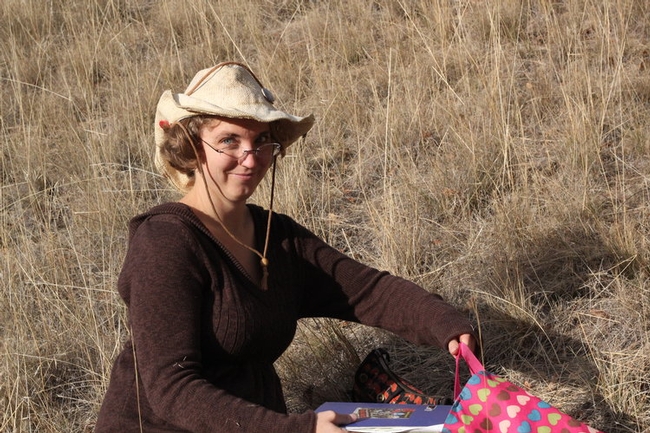Do you know where your nematodes are? If you're a grower, you should.
"To make informed management decisions and ensure that environmentally damaging soil fumigants are applied only when and where needed, growers need to know precisely the density and distribution of pest nematodes," says nematologist Amanda Hodson, a professional researcher in the UC Davis Department of Entomology and Nematology who will present a departmental seminar at 4:10 p.m., Wednesday, Jan. 31 in 122 Briggs Hall.
Hodson, who will deliver the hourlong seminar on "Molecular Detection and Integrated Management of Plant Parasitic Nematodes," studies the interrelationships between nematode pests, ecosystem functioning and management decisions.
"Molecular methods overcome some of the drawbacks of the labor and time intensive process of nematode detection," she says. "Our analysis has established the accuracy of real time PCR (qPCR) primers which accurately differentiate and quantify several pest nematodes from other nematodes in the soil including lesion nematode (Pratylenchus vulnus), ring nematode (Mesocriconema xenoplax) and two separate groups of root knot nematodes (Meloidogyne spp.). Integrated management of these soil pests requires better understanding of the interactions between nematode pest suppression, soil food webs, management tactics, crop productivity, and soil health. Our experiments link managing for nematode pest suppression with other desired ecological outcomes such as increased soil organic matter and nutrient cycling in cropping systems such as almonds, tomatoes and carrots."
Hodson's research integrates plant and root biology with the fields of entomology, nematology, acarology and biogeochemistry. She completed her doctorate in entomology at UC Davis in 2010 on the ecological effects of a biological control agent in pistachio orchards, finding that the entomopathogenic nematode, Steinernema carpocapsae, caused temporary changes in native soil food webs. Following up on these results in the laboratory, she found that the European earwig (Forficula auricularia) could serve as a novel host for the nematode. This susceptibility depended on host body size with significantly higher mortality rates seen in larger earwigs.
The departmental seminars (see schedule) are open to all interested persons. Seminar coordinators are assistant professor Rachel Vannette, Extension apiculturist Elina Lastro Niño and doctoral student Brendon Boudinot of the Phil Ward lab.
Attached Images:
